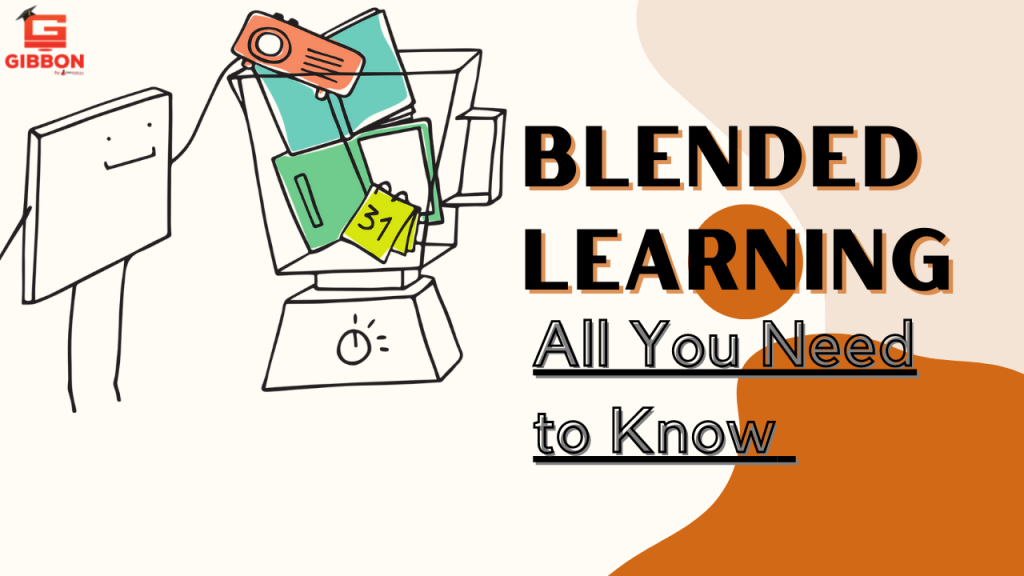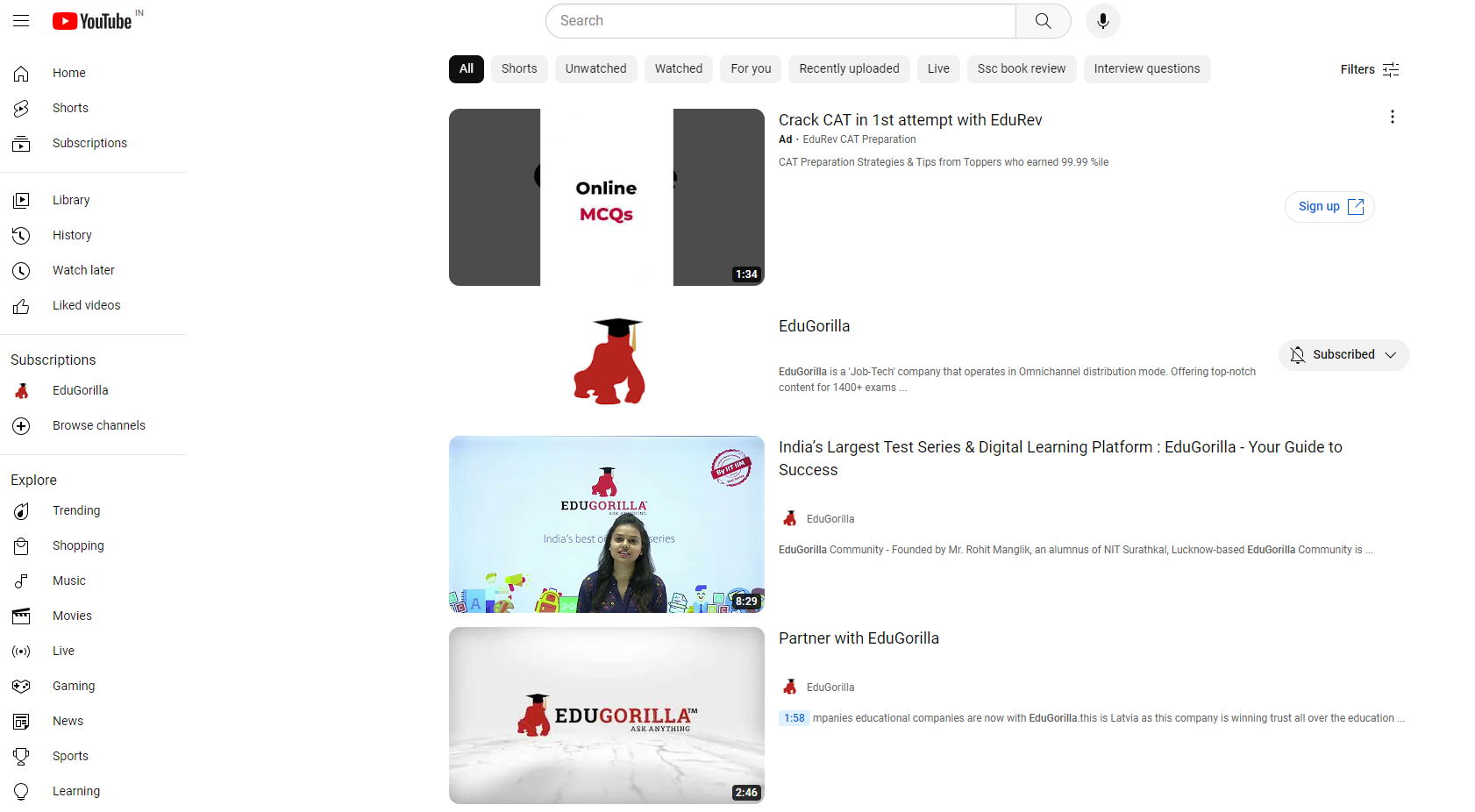The educational system is now under transformation. To face the difficulties of expansion and to satisfy the needs of individuals, it is attempting to embrace new technologies and explore new avenues in order to achieve the aim of quality educational opportunities for everyone.

Introduction
Blended learning is a creative idea that combines the benefits of both traditional classroom instruction with ICT-supported learning, which includes both offline and online learning. It provides opportunities for collaborative learning, constructive learning, and computer-assisted learning (CAI). A blended learning approach necessitates concerted effort, the correct mentality, a sizable budget, and highly motivated instructors and students for its successful implementation.
Despite its flaws, the traditional method of teaching adds a much-needed personal touch to the teaching-learning process. Teachers’ personalities and behaviors have a direct impact on the pupils’ developing personalities. Though the traditional methods are advantageous in certain aspects, it also has a lot of deficiencies as well as mentioned below.
- It is failing to address the particular requirements of all children in the class mostly owing to an insufficient student-teacher ratio.
- It is not adjusting to the difficulty of educating physically challenged pupils and teachers are not educated for integrated classrooms.
- It is unfit to face the issues posed by irregular students since attendance is required and the assessment system is based on the annual test.
- Because school cannot reach every kid, education for all remains a long-term aim.
Requirements for Blended Learning
Blended learning is not a simple undertaking to do. It necessitates basic preparations in all aspects of the teaching-learning process—teacher, student, content design, and infrastructure. The following are the fundamental conditions for successfully adopting online blended learning.
Features of the Teacher
- Despite being child-centered, instructors are a crucial component of the advantages of blended learning. Teachers should be well-versed in the notion of blended learning, as well as properly educated and proficient in combining both traditional and modern techniques.
- They should be familiar with internet browsing and vocabulary, as well as all of the websites that might be valuable to kids when learning online.
- It is essential that instructors have a scientific mindset. They should be able to observe well, be positive, and be capable of problem resolution.
- The blended learning process also requires teachers that have a broader perspective and are adaptable, ready to accept changes, and extremely inventive and dynamic.
Infrastructure
- Blended learning is heavily reliant on infrastructure; schools need not only decent classrooms, but also well-equipped compute laboratories with enough computers to cater to all of the students in one class, as well as internet access and, if feasible, a Wi-Fi campus.
- In addition to the effectiveness of blended learning on students in a completely ICT-friendly university, students should have basic hardware support at home to learn online and offline.
- This necessitates a constructive attitude on the part of the government, as well as strong investment initiatives.
- The system should be adaptable, with a flexible timetable and an assessment system, all of which are critical for adopting blended learning.

Other Parameters
- Parents should be made aware of this creative method of teaching so that they are prepared for it and can assist their children in their transition to blended learning and understand that this departure from traditional teaching is helpful to their children.
- As summative evaluation is not supported in blended learning, school authorities and higher educational organizations should be prepared to fully adopt continuous internal assessment (CAI) and other techniques of formative evaluation.
- To make the method more flexible, online examinations should be included.
Features of Blended Learning
- Students in blended learning can choose between conventional classroom teaching, where they can engage with the teacher and their classmates, and ICT-supported instructional learning.
- It is a vital aspect of blended learning that teachers are dynamic, technologically aware, and thoroughly prepared to work efficiently.
- Students get plenty of opportunities to engage with other students enrolled in the same course. They can interact with them both on campus and in virtual spaces.
- Today, all sectors require ICT competence, therefore blended learning may help students gain a rich ICT experience. Students that participate in blended learning develop the capacity to fully utilize accessible technology.
- Students benefit from blended learning because it allows them to practice real skills. Students learn qualities such as love, empathy, and patience in the classroom from their professors and peers, and others such as self-management, decision making, critical thinking, and communication from their online interactions.
- Students in blended learning have the opportunity to develop their personalities on all levels.
- The blended learning method allows students to communicate and share their thoughts and feelings with students from all over the world, making the teaching and learning process multinational.
Advantages of Blended Learning
- Because some of the learning is done through ICT, either online or offline, instructors and students have more time in the classroom for creative and cooperative examples of blended learning activities.
- Benefits of blended learning include student benefit from online learning and CAI while retaining the social connection and human touch of conventional instruction.
- It broadens the scope of communication. The communication cycle is completed in mixed learning, which would not be feasible if we simply used traditional methods.
- Effects of blended learning on students make them more technologically adept, and their digital fluency improves.
- Students’ professionalism is growing as they acquire attributes such as self-motivation, self-responsibility, and discipline.
- It changes course content and so breathes new life into old courses.
To summarise, blended learning is, to some part, a solution to the challenges that exist in our educational system. If implemented in a well-planned, organized manner with the appropriate attitudes, it has the potential to become the future of our educational system. It is in our best interests to get started on implementing blended learning as soon as possible.
ABOUT GIBBON
Gibbon is a Plug and Play solution offered by EduGorilla, for anyone with a skill to teach. Gibbon helps you to take your classes online and earn independently.
- Gibbon gives you the ability to conduct & record LIVE classes, host unlimited video courses, provide online mock tests, and conduct online tests with LIVE proctoring abilities.
- Gibbon also provides you ready-made content of 1600+ Competitive, Entrance, and Academic exams from around the country.
- Gibbon helps you reach out to more students online and get a complete marketing setup.
- We have helped more than 3000 Brands, 10000 Institutes, 20000 Teachers and 2 Crore Students, transform their education and future.
Gibbon stands for “Online-Ready Teachers for a Future-Ready India”.
To get started, book your free demo now.






